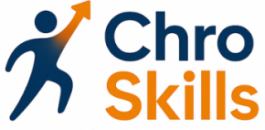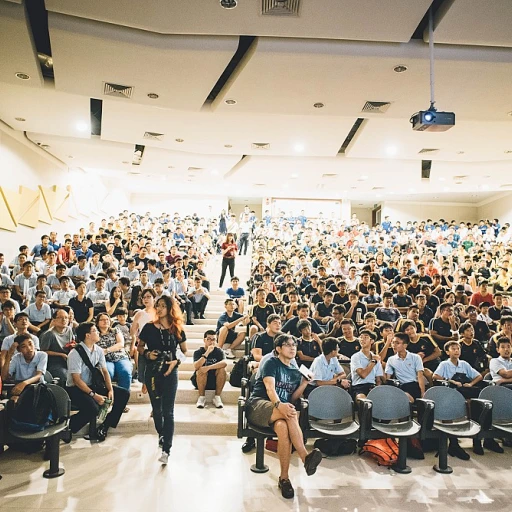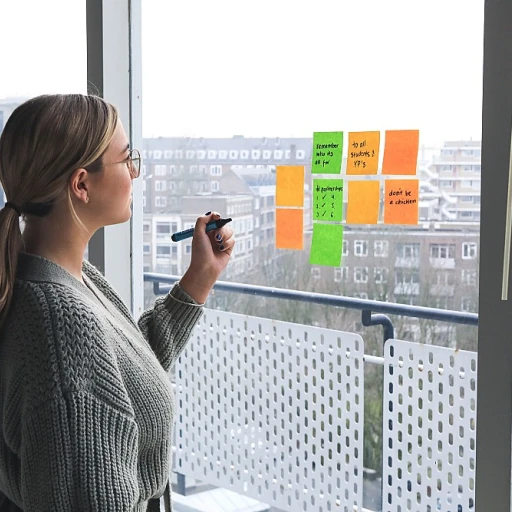
Understanding Talent Mobility
The Core of Talent Mobility in Organizations
Understanding talent mobility begins with recognizing its value within an organization. At its heart, talent mobility is about optimizing the movement of employees across various roles and departments to best leverage their skills and abilities. This internal mobility strategy enables employees to develop their careers while contributing to the company’s goals. For businesses, talent mobility offers an opportunity to fill key roles by utilizing current talent, therefore reducing recruitment costs and time. It fosters a dynamic and adaptive workplace culture where continuous learning and development are valued, ensuring that employees are equipped for future challenges. This emphasis on internal talent growth aligns with the principles found here. In successful organizations, talent mobility isn't an ad-hoc initiative but rather a structured framework known as a mobility program. These programs are carefully managed to ensure that employees are placed in positions where they can thrive while preparing for future leadership roles. Essential components of the mobility framework include effective talent marketplace systems, role mobility strategies, and robust career development programs. A proactive approach to mobility programs ensures that talent is not only retained but also continually engaged and motivated. As internal moves become a standard part of career development within businesses, employees benefit from diverse learning development opportunities, which in turn enhances their career trajectories and supports the organization’s long-term success. This strategic talent management approach is crucial to maintaining a competitive edge. Every company aiming to thrive must embrace the culture of continuous growth and adaptation, allowing employees to move fluidly within the organization, driven by strategic planning and robust management. Such a culture unlocks the potential of both the workforce and the business itself, setting a strong foundation for role mobility and leadership excellence.Key Skills for HR Leaders
Essential Skills for HR Leadership
In the dynamic landscape of human resources, the role of a Chief Human Resources Officer (CHRO) is pivotal in driving talent mobility within an organization. To effectively manage this, HR leaders must possess a diverse set of skills that enable them to navigate the complexities of internal talent movement and career development. Here are some key skills that are essential for HR leaders:
- Strategic Thinking: The ability to develop a comprehensive mobility strategy is crucial. HR leaders must align talent mobility initiatives with the company's overall business goals, ensuring that internal moves support organizational growth.
- Communication Skills: Clear and effective communication is vital for engaging with employees and stakeholders. HR leaders must articulate the benefits of mobility programs and foster a culture of continuous learning and development.
- Change Management: Facilitating internal moves requires adept change management skills. HR leaders must guide employees through transitions, addressing concerns and ensuring smooth role mobility.
- Analytical Skills: Understanding data and metrics is essential for measuring the success of mobility programs. HR leaders should be able to analyze employee roles and identify opportunities for growth and development.
- Leadership and Influence: As champions of talent mobility, HR leaders must inspire and influence others to embrace internal mobility. They should lead by example, promoting a culture that values career development and internal talent movement.
- Technology Proficiency: Leveraging technology is key to enhancing mobility management. HR leaders should be familiar with tools and platforms that facilitate talent marketplaces and streamline mobility processes.
By honing these skills, HR leaders can effectively manage talent mobility, ensuring that employees move seamlessly within the organization and contribute to its success. For more insights on enhancing HR efficiency, explore enhancing efficiency with candidate self-scheduling.
Strategic Planning for Talent Mobility
The Art of Crafting a Talent Mobility Framework
Developing a robust strategy for talent mobility is crucial for organizations looking to optimize internal talent movement. By focusing on mobility, not only do companies nurture employee growth, but they also enhance their workforce capabilities without the exhaustive search for external candidates. A well-thought-out mobility program requires deliberate planning and execution. First and foremost, aligning the talent mobility framework with the organization's broader goals is imperative. Identifying key business objectives allows HR leaders to map out which roles and skills are critical to achieving these goals. Subsequently, assessing current talent—and recognizing where they might best fit—paves the way for effective internal moves. Crucially, facilitating career development opportunities is essential for motivating internal talent to pursue new roles. Incorporating a strong culture of continuous learning and development ensures that employees are ready to step into new positions. Management plays an instrumental role by encouraging training and supporting employee growth through accessible learning resources and programs. Moreover, establishing a transparent talent marketplace within the company fosters an ecosystem where role mobility is the norm. Employees can navigate career opportunities, enabling them to make informed decisions about their potential career paths. Crafting a successful mobility strategy also involves leveraging these frameworks to create dynamic mobility programs that anticipate the career aspirations of employees. By doing so, organizations can not only unlock talent mobility but also develop a thriving culture where employees are empowered to explore opportunities for growth and leadership within their current roles. Considering the challenges of implementing such frameworks, HR leaders can explore engaging activities and learning workshops to help employees understand and embrace mobility changes. More insights on fostering engaging environments for youth groups can be found here, providing valuable perspectives on creating adaptable and inclusive learning cultures.Overcoming Challenges in Talent Mobility
Addressing Barriers to Talent Mobility
In the journey of enhancing talent mobility within an organization, HR leaders often encounter a variety of challenges. These obstacles can hinder the seamless movement of employees across roles and departments, impacting the overall effectiveness of mobility programs. Understanding these challenges is crucial for developing a robust mobility strategy.
Resistance to Change
One of the primary barriers is resistance to change. Employees and management alike may be hesitant to embrace internal mobility due to comfort with the status quo or fear of the unknown. To counter this, fostering a culture of continuous learning and development is essential. Encouraging employees to view role mobility as an opportunity for career growth can help mitigate resistance.
Lack of Clear Pathways
Another significant challenge is the absence of clear pathways for internal moves. Without a well-defined mobility framework, employees may struggle to see potential career development opportunities within the company. HR leaders must work on creating transparent mobility programs that outline possible career trajectories and the skills required for each role.
Skills Gaps
Skills gaps can also pose a challenge to effective talent mobility. Employees may lack the necessary skills to transition into new roles, which can stall internal talent movement. Implementing targeted training and learning development initiatives can help bridge these gaps, ensuring that employees are equipped for new challenges.
Management Support
Securing management support is crucial for successful talent mobility. Leaders need to be on board with the idea of internal mobility and actively promote it within their teams. This involves aligning mobility strategies with business goals and demonstrating how internal moves can benefit the organization as a whole.
Measuring and Adjusting Strategies
Finally, overcoming challenges in talent mobility requires ongoing evaluation and adjustment of strategies. By measuring the success of mobility initiatives, HR leaders can identify areas for improvement and make necessary adjustments to enhance the effectiveness of their mobility management efforts.
Leveraging Technology for Talent Mobility
Integrating Technology to Enhance Talent Mobility
In an ever-evolving business landscape, the integration of technology into talent mobility strategies is indispensable for HR leaders. It's essential for organizations aiming to optimize the movement of talent within their structures efficiently. From enhancing internal mobility to streamlining management processes, technology acts as a catalyst in driving a successful talent mobility program. The role of technology in mobility programs primarily includes improving tracking and transparency across different employee roles. By establishing a talent marketplace, companies can efficiently manage the progression of internal talent. This facilitates not only role mobility among employees but also ensures that career development paths are visible and accessible to everyone within the organization. Moreover, implementing a robust mobility framework aided by technology can provide employees with valuable insights into potential career highs and development opportunities. Continuous learning tools embedded within technological platforms support a culture of continuous development, allowing employees to move through various roles seamlessly and increase their value within the company dynamically. Advanced mobility management systems also play a crucial role in identifying current talent gaps and predicting future needs, enabling a proactive rather than reactive approach. For organizations seeking a comprehensive talent management system, incorporating technology translates into better-aligned business objectives and a consistent growth trajectory. Incorporating technology doesn't come without challenges, yet with the correct strategic approach, the benefits far outweigh the potential hurdles. HR leadership that embraces technological advancements in their mobility strategy not only enhances employee experiences but significantly impacts the organization’s overall growth and readiness for future challenges. This integration is indeed a game-changer in talent mobility management, ensuring businesses not only survive but thrive in competitive environments.Measuring Success in Talent Mobility
Evaluating the Impact of Talent Mobility Initiatives
Measuring the success of talent mobility within an organization is crucial for understanding its effectiveness and areas for improvement. As HR leaders, it's essential to establish a robust framework that evaluates both qualitative and quantitative aspects of mobility programs. This involves assessing how well these initiatives align with the company's strategic goals and contribute to overall business growth.
Key Metrics for Assessing Mobility Success
To effectively measure the impact of talent mobility, consider the following metrics:
- Employee Retention Rates: Monitor how internal mobility affects retention. A successful program should ideally lead to higher retention rates, as employees find new opportunities for growth within the company.
- Employee Engagement Levels: Use surveys and feedback tools to gauge employee satisfaction with mobility opportunities. Engaged employees are more likely to participate in and benefit from mobility initiatives.
- Career Development Progression: Track the career paths of employees who have participated in mobility programs. This can provide insights into how these initiatives support career development and role mobility.
- Skill Development and Learning: Evaluate the effectiveness of training and learning development programs associated with mobility. This includes assessing whether employees are acquiring new skills that enhance their roles and contribute to the organization's success.
- Internal Promotion Rates: Measure the rate at which employees are promoted internally as a result of mobility programs. This indicates the program's success in preparing employees for leadership roles.
Continuous Improvement and Feedback Loops
Implementing a culture of continuous learning and improvement is vital for the long-term success of talent mobility strategies. Regularly gather feedback from employees and managers involved in mobility programs to identify strengths and areas for enhancement. This feedback loop allows HR leaders to refine mobility frameworks and ensure they remain aligned with the evolving needs of the business and its employees.
Ultimately, a well-executed talent mobility strategy not only supports internal talent development but also strengthens the organization's ability to adapt and thrive in a competitive business environment. By focusing on these key metrics and fostering a culture of continuous improvement, HR leaders can unlock the full potential of their talent mobility initiatives.













